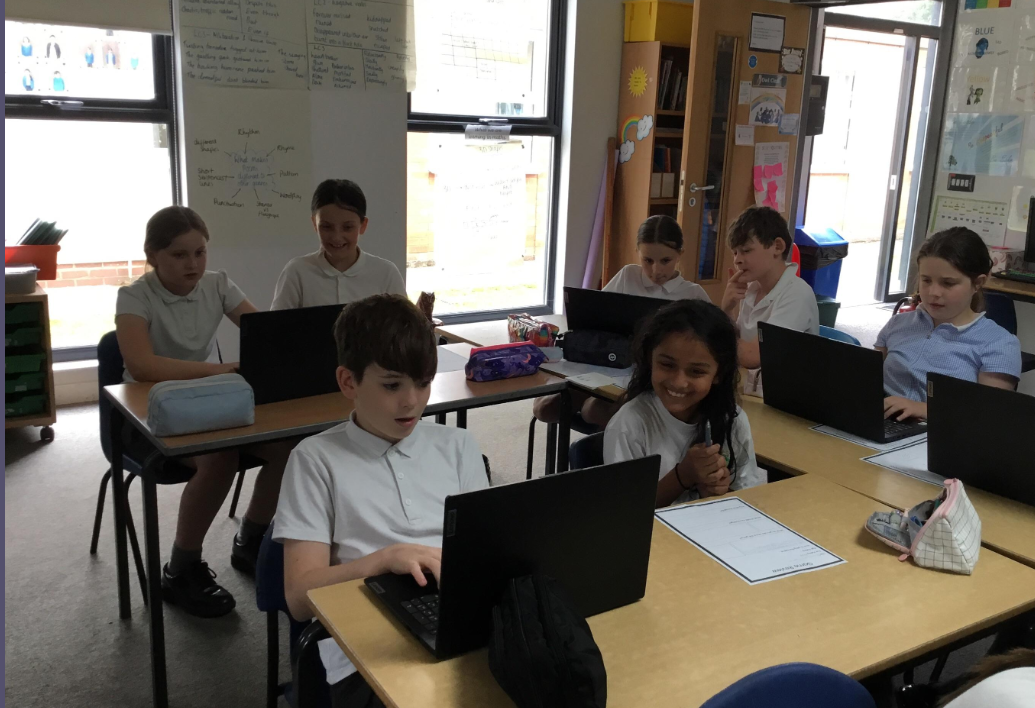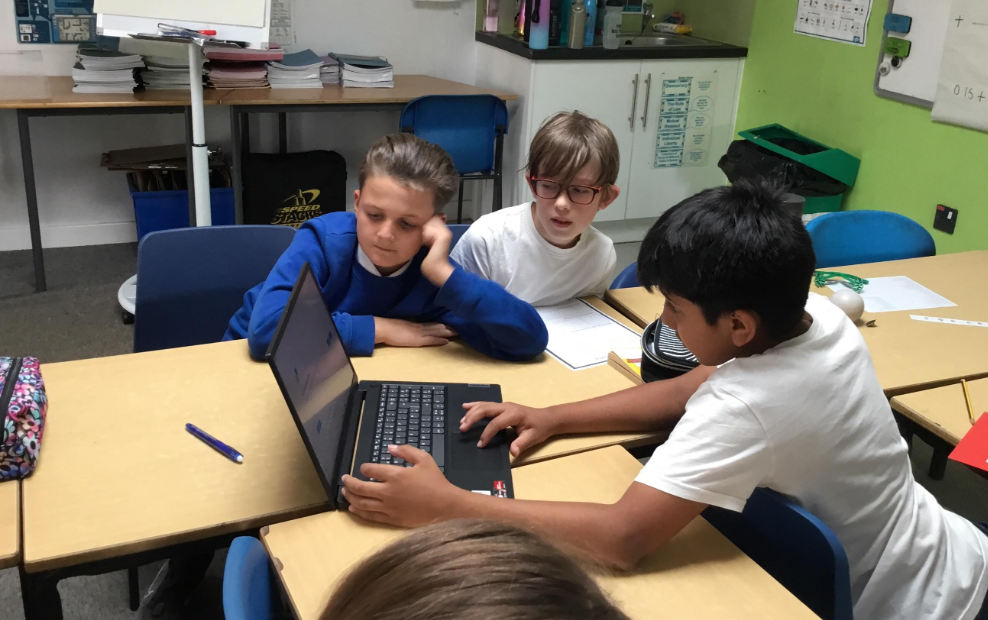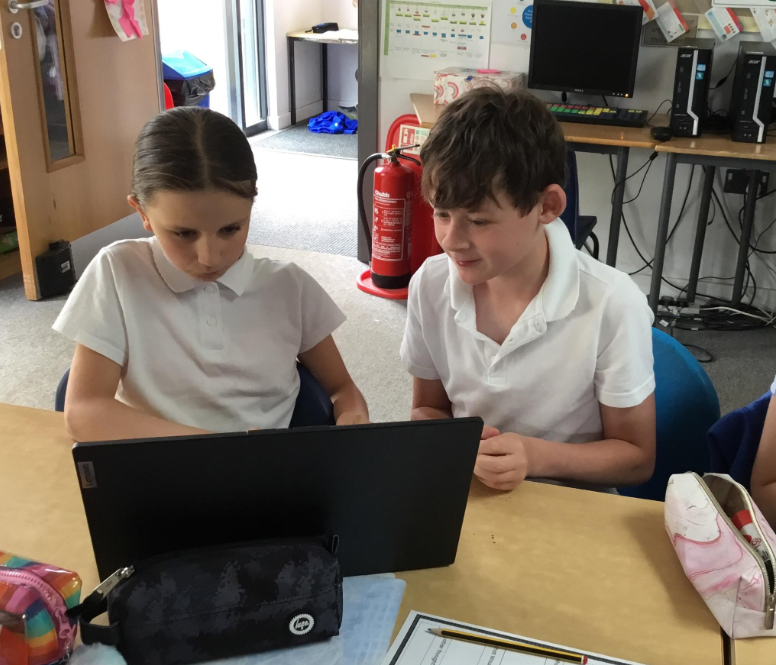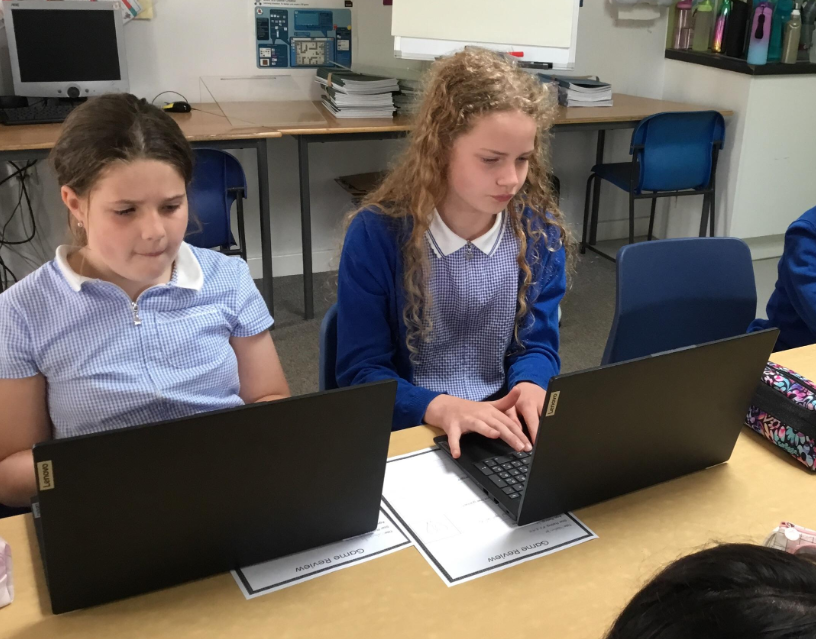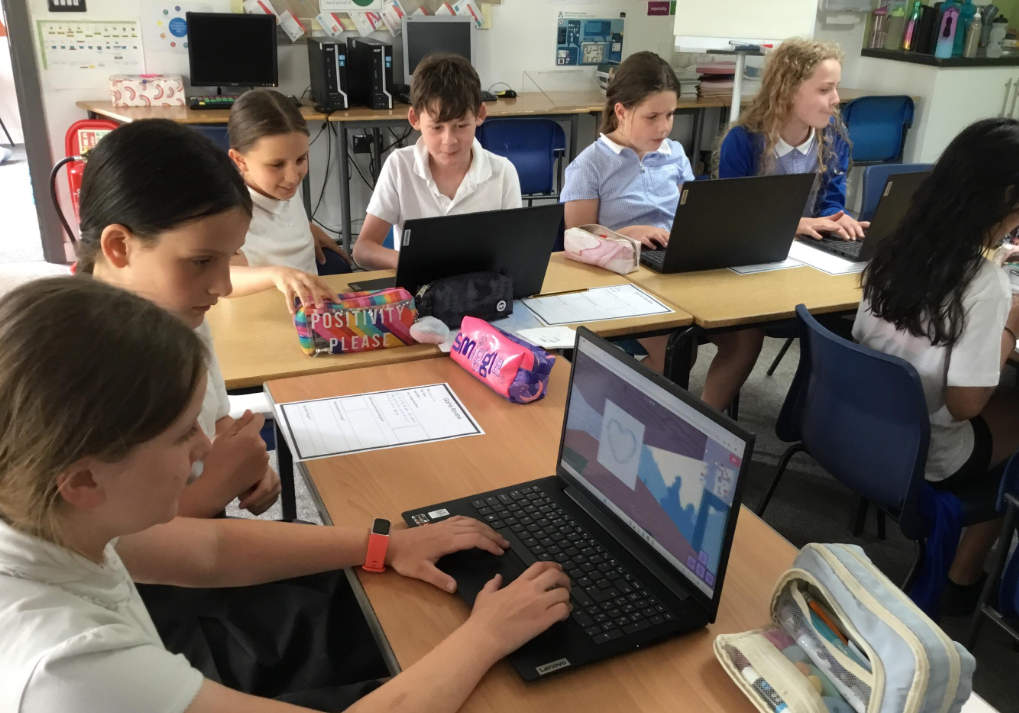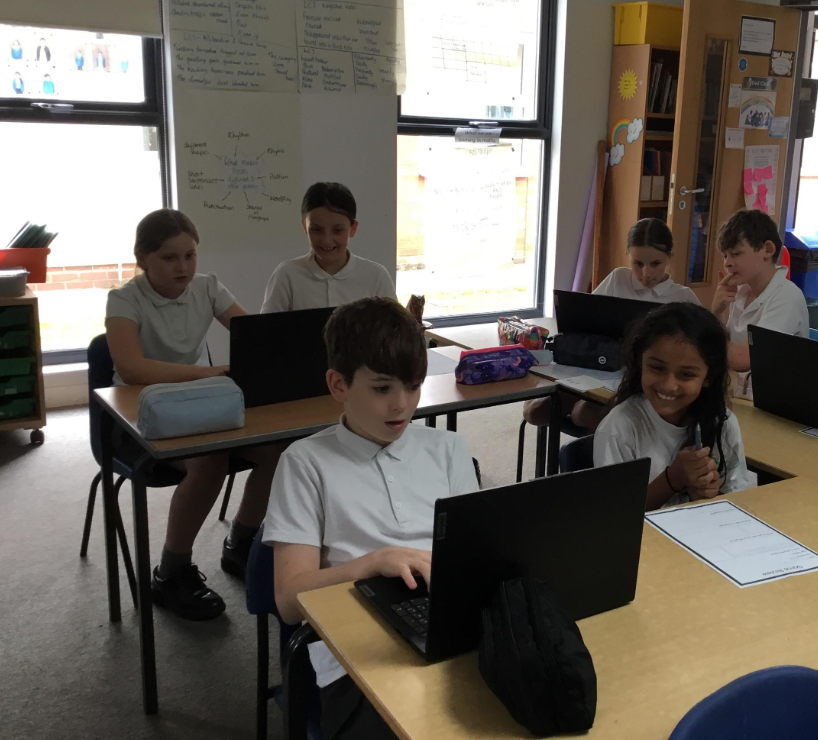Computing
Computing Co-Ordinator Miss J Notaro
Computing curriculum vision:
At Carlton CofE Primary, our goal is to deliver an exceptional computing education that empowers children to utilise computational thinking and creativity in order to comprehend and transform the world around them. We strive to motivate and push all students to reach their maximum potential by setting high expectations and providing inspiring teaching. We recognise the importance of students grasping modern information and communication technologies, and utilising these skills to become responsible, capable, confident, and innovative contributors in an ever-evolving digital society, allowing them to be best prepared to face the future.
What do we want to achieve?
We aim to provide a high-quality computing education which equips children to use computational thinking and creativity to understand and change the world. At Carlton Primary School, we understand that it is essential for pupils to understand modern information and communication technologies, and for them to use these skills to become responsible, competent, confident and creative participants of an increasingly digital world. Technology is changing the lives of everyone. Through teaching Computing, we aim to equip children to participate in a rapidly-changing world that is controlled and transformed by technology. It is our intention to enable the children to develop the skills necessary to be able to use information in a discriminating and effective way. Our Computing curriculum should be relevant to the pupils’ lives and reflect the increase in computing, preparing children for a life where technology surrounds them. We want pupils to be independent, forward thinkers of technology and not passive learners. When teaching computing, we equip children with the skills required to use computers effectively to enable them to maximise their potential. To do so, we deploy teaching strategies through the Purple Mash scheme of work that promotes resilience, independence, critical thinking, communication skills and problem solving.
We intend on delivering a broad curriculum which encourages a love of learning for children within a progressive sequence. We understand that preventative methods of online/ social media misuse can be addressed through education, embedded within our school values: Friendship; Forgiveness and Trust. We recognise that Computing unlocks pathways for children to be inquisitive individuals and provides a balance of structure and a canvas for digital artists to share their learning in creative ways. We aspire for our children to take pride in their work and to become competent with a varied range of tools that best expresses their understanding. By the end of Year 6, we aim for children to become confident users of computing and responsible digital citizens who are ready to meet the challenges of their digital future.
How will we do this?
At Carlton Primary School, computing is taught using Purple Mash schemes of work, allowing children to build on their knowledge year by year. In KS1, pupils learn the basic elements of a computer and become technologically literate, allowing them to navigate a computer independently. They are introduced to computing language through the use of Bee Bots and various ‘2-simple’ programmes. As children progress into KS2, they are able to develop their knowledge, understanding and skills in computer programming. The national curriculum for computing aims to ensure that all pupils:
-
- Can understand and apply the fundamental principles and concepts of computer science, including abstraction, logic, algorithms and data representation
- Can analyse problems in computational terms, and have repeated practical experience of writing computer programs in order to solve such problems
- Can evaluate and apply information technology, including new or unfamiliar technologies, analytically to solve problems
- Are responsible, competent, confident and creative users of information and communication technology.
In EYFS, computing is interwoven into daily routines and children have the opportunity to explore computer devices in the provision areas and develop ideas modelled by adults. Children are also encouraged to develop their small motor skills so that they can use a range of tools competently, safely and confidently. Find the document below that allows you to understand further how computing fits into EYFS and how the foundations are formed.
At Carlton Primary School, we recognise the fact that the effectiveness of any resource is dependent upon how and why it is being used. We believe that the appropriate use of good quality resources will enhance good teaching. Children have access to a wide range of resources including iPads, a computing suite plus classroom computers for children to access independently within every lesson. Through following the Purple Mash Scheme of Work, we ensure that there is a clear progression of skills fully embedded across all key stages.
Computing is used to enhance other areas of the curriculum through cross-curricular topics. This could be the use of research like historians in History, digital maps in Geography lessons, presenting data in Maths and Science or exploring images in Art through digital media.
Additionally, E-safety is an essential part of our computing curriculum with each half-term starting with an E-safety recap as well as a stand-alone unit in every year group to develop children’s understanding and ability of how to stay safe online and when using the computer.
What outcome do we want for our children?
A high-quality computing education equips pupils to use computational thinking and creativity to understand and change the world. By the time they leave Carlton Primary School, children will have gained key knowledge and skills in the three main areas of the computing curriculum: computer science (programming and understanding how digital systems work), information technology (using computer systems to store, retrieve and send information) and digital literacy (evaluating digital content and using technology safely and respectfully). By becoming digitally literate – children become computational thinkers, using computing to express themselves and develop their ideas through, information and communication technology – at a level suitable for the future workplace and as active participants in a digital world. The objectives within each strand support the development of learning across the key stages, ensuring a solid grounding for future learning and beyond. We encourage our children to enjoy and value the curriculum that we deliver. Fundamentally, we ask the ‘why’ and not just the ‘how’ to explore the depth of each objective within a stimulating environment that encourages children to discuss, reflect and appreciate the impact that Computing has on their learning, development and wellbeing. Finding the right balance with technology is key to an effective education and a healthy lifestyle. We look for positive impact through observing learning regularly, early intervention where necessary and reviewing pupil’s digital skills through tools across Purple Mash. Progress of our Computing curriculum is measured through outcomes and the record of coverage through work saved in pupils’ personal document folders and saved ‘to do’ content electronically.
Expectations:
At the end of KS1 children should:
- Understand what algorithms are; how they are implemented as programs on digital devices; and that programs execute by following precise and unambiguous instructions
- Create and debug simple programs
- Use logical reasoning to predict the behaviour of simple programs
- Use technology purposefully to create, organise, store, manipulate and retrieve digital content
- Recognise common uses of information technology beyond school
- Use technology safely and respectfully, keeping personal information private; identify where to go for help and support when they have concerns about content or contact on the internet or other online technologies.
At the end of KS2 children should:
- Design, write and debug programs that accomplish specific goals, including controlling or simulating physical systems; solve problems by decomposing them into smaller parts
- Use sequence, selection, and repetition in programs; work with variables and various forms of input and output
- Use logical reasoning to explain how some simple algorithms work and to detect and correct errors in algorithms and programs
- Understand computer networks including the internet; how they can provide multiple services, such as the world wide web; and the opportunities they offer for communication and collaboration
- Use search technologies effectively, appreciate how results are selected and ranked, and be discerning in evaluating digital content
- Select, use and combine a variety of software (including internet services) on a range of digital devices to design and create a range of programs, systems and content that accomplish given goals, including collecting, analysing, evaluating and presenting data and information
- Use technology safely, respectfully and responsibly; recognise acceptable/unacceptable behaviour; identify a range of ways to report concerns about content and contact.
Useful links for parents to help keep children safe online:
Coding - computer science:
Spreadsheets - information technology:



Computer Science workshop:




New laptops donated by Mr and Mrs Tusting:
